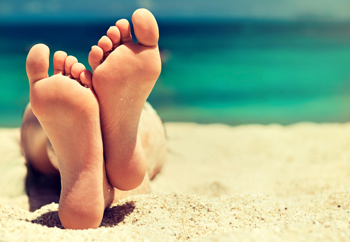 The toe that is most often affected by gout is the big toe. Crystals can form in the joints of the toes, causing severe pain and difficulty walking. There are specific triggers that are known to cause gout. These can include eating foods such as red meat and shellfish, and drinking beverages that have a high sugar content. Additionally, genetic factors may contribute significantly in the development of gout. The symptoms that are associated with gout is tenderness surrounding the affected joint, redness, and stiffness. An effective method that may help to prevent gout can be including fresh fruits and vegetables in your daily eating habits, in addition to drinking plenty of fresh water. If you are afflicted with frequent gout attacks, it is suggested that you seek the care of a podiatrist.
The toe that is most often affected by gout is the big toe. Crystals can form in the joints of the toes, causing severe pain and difficulty walking. There are specific triggers that are known to cause gout. These can include eating foods such as red meat and shellfish, and drinking beverages that have a high sugar content. Additionally, genetic factors may contribute significantly in the development of gout. The symptoms that are associated with gout is tenderness surrounding the affected joint, redness, and stiffness. An effective method that may help to prevent gout can be including fresh fruits and vegetables in your daily eating habits, in addition to drinking plenty of fresh water. If you are afflicted with frequent gout attacks, it is suggested that you seek the care of a podiatrist.
Gout is a foot condition that requires certain treatment and care. If you are seeking treatment, contact one of our podiatrists from Canonsburg Podiatry Associates. Our doctors will treat your foot and ankle needs.
What Is Gout?
Gout is a type of arthritis caused by a buildup of uric acid in the bloodstream. It often develops in the foot, especially the big toe area, although it can manifest in other parts of the body as well. Gout can make walking and standing very painful and is especially common in diabetics and the obese.
People typically get gout because of a poor diet. Genetic predisposition is also a factor. The children of parents who have had gout frequently have a chance of developing it themselves.
Gout can easily be identified by redness and inflammation of the big toe and the surrounding areas of the foot. Other symptoms include extreme fatigue, joint pain, and running high fevers. Sometimes corticosteroid drugs can be prescribed to treat gout, but the best way to combat this disease is to get more exercise and eat a better diet.
If you have any questions please feel free to contact our office located in Canonsburg and McMurray, PA . We offer the newest diagnostic and treatment technologies for all your foot and ankle needs.









